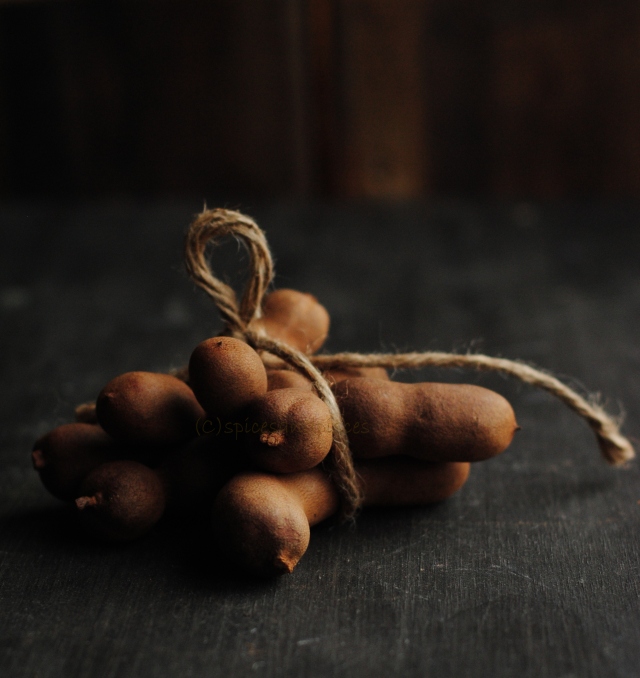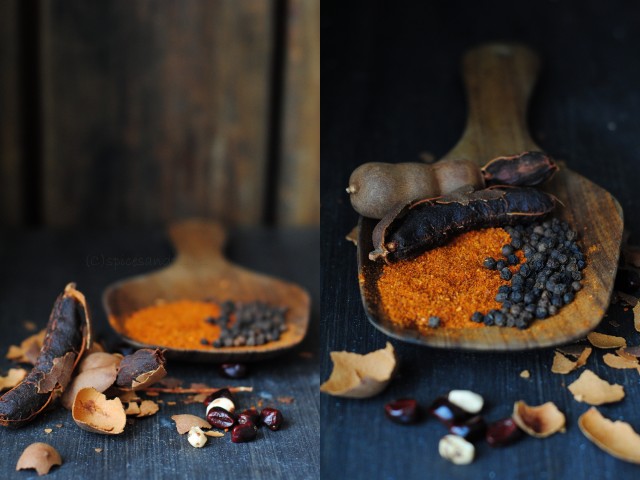“Jadi hao sujon, tNetul patay nawjon”
Literal translation: “If you are a good person, nine of you can stand together on a tamarind leaf”
Actual meaning: “Nothing is going be too little to share if you are a friend”
If you are not a Bengali, you probably have no clue what this means. But if you are familiar with a tamarind leaf, maybe the English translation makes sense – the reference is to the tightly packed leaflets of the tamarind leaf. Tamarind is so ubiquitous in India that I always assumed it is native to the subcontinent. Indeed, the scientific name, Tamarindus indica would suggest so, although I found out I was quite wrong.
From time immemorial, Africa and Asia have been connected by commerce. Traders were attracted to ivory, gold and slaves in Africa while spices and precious stones from the Orient. Tamarind, native to Africa, might have been introduced to India or South East Asia through such trading. Exactly when this happened is a topic of debate, with some saying it came around 2000 BC; others argue that it came much later with Portuguese sailors who stopped by the Cape of Good Hope on their way to Asia.
The word tamarind came from the Arabic word “tamr-hindī” or ‘Indian date’. Arab traders crossing the Persian Gulf brought tamarind back with them, and introduced it to Iran, Egypt and other Persian countries. After the Portuguese took over the trade in the African coast, the trading and exchange of tamarind took an industrial structure. Like so many other things, tamarind was introduced to Europe and South/Central America by Portuguese and Spanish traders. Particularly in South America, tamarind became wildly popular, to the extent that Santa Clara, a city in Cuba declared tamarind as their official tree (as the council of elders had decided to found the city after meeting under a tamarind tree).
In India, tamarind has been used for ages, be it in candy form, in chutneys, in soups, curries or as an Ayurvedic medicine. It is an indispensable ingredient in cuisines of South Indian states. Maybe due to its strong and unique taste, tamarind found diverse uses across the world. It is used in Worcestershire sauce in the UK, as a refreshing summer drink in India and in the Middle East, as street-side candies in South America and in curries and sauces in South Asia. Apart from the pods, the leaves and the flowers are eaten as a salad in Burma. Due to its high vitamin C content, during the Age of Sail, tamarind was carried by the sailors as a preventative measure against scurvy. According to Ayurveda, tamarind dissolved in water with raw sugar is believed to protect the body from heat. The southern part of India being much hotter than rest of the country, tamarind consumption is more of a staple than a mere condiment.
This sweet, sour and a somewhat spicy chutney is very versatile and can be used in many ways. Use it as a dip for your deep-fried indulgences, use it in salads, add it to beaten yogurt to make a chaat, or just lick it off your fingers like I do.
Recipe: (adapted from Manjula’s recipe)
Ingredients:
Tamarind, seeded or buy the seedless packet: ½ lb.
Sugar: 2 cups (more if you like it very sweet and also the amount of sugar will depend on the tartness of your tamarind)
Cumin seeds: ½ tbsp.
Coriander seeds: ½ tbsp.
Dry red chili: 3-4 nos.
Salt: start with one table spoon and then adjust
Black salt: to taste
Black pepper: 1 tsp.
- Break the tamarind into small pieces and soak in one cup of hot water for one hour.
- Mash it into a pulp and strain, pressing the tamarind into the strainer to remove all the pulp.
- Add the sugar and the salt (regular).
- Add another half a cup or one cup of water and then boil it for 10-15 minutes.
- Add all the dry spices and the black salt. Cook it for one or two minutes.
- Check for seasoning and adjust accordingly.
- Let it cool and the put it into a clean dry jar.
- Refrigerate it once completely cooled.
- It stays in the fridge for few months if handled properly.
Keep it a little bit more liquid-y than you want your chutney’s final consistency at the end. It will thicken gradually while cooling.









Lovely chutney.
One of my favorite chutneys, also combined with dates. You take beautiful pictures!
I’m happy to learn you are a Bengali! I go to Navadvip and Mayapur with my husband as often as I can, which is too rarely 🙂 Love the dhama!
Great your site.
When i view your article and view your site have good.
I like your site.
I have feel good in your content the best.
thanks for this nice information.